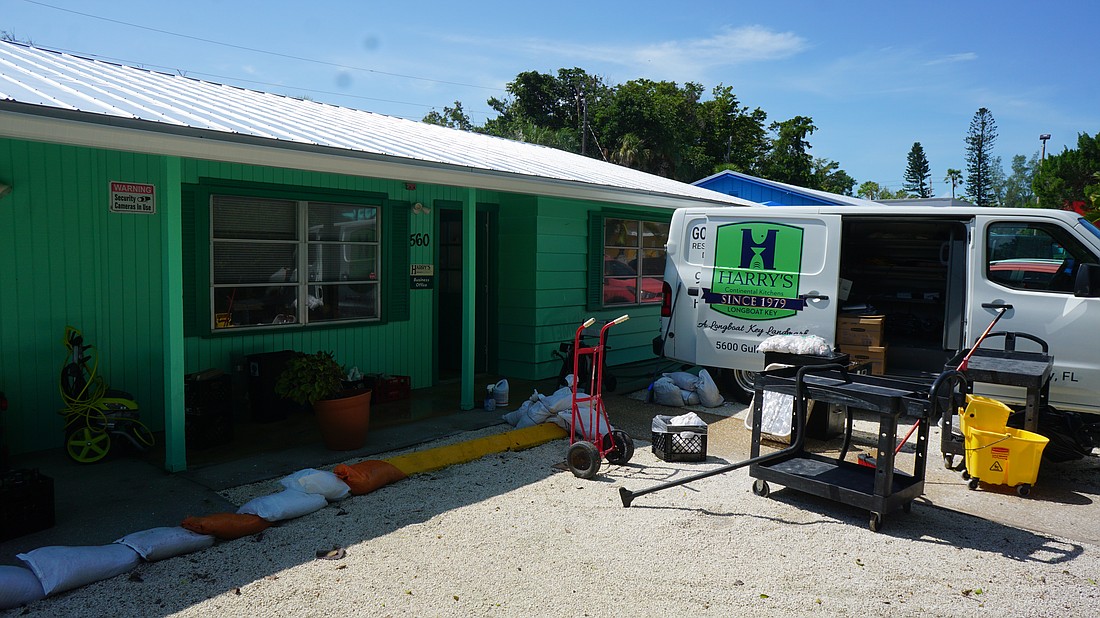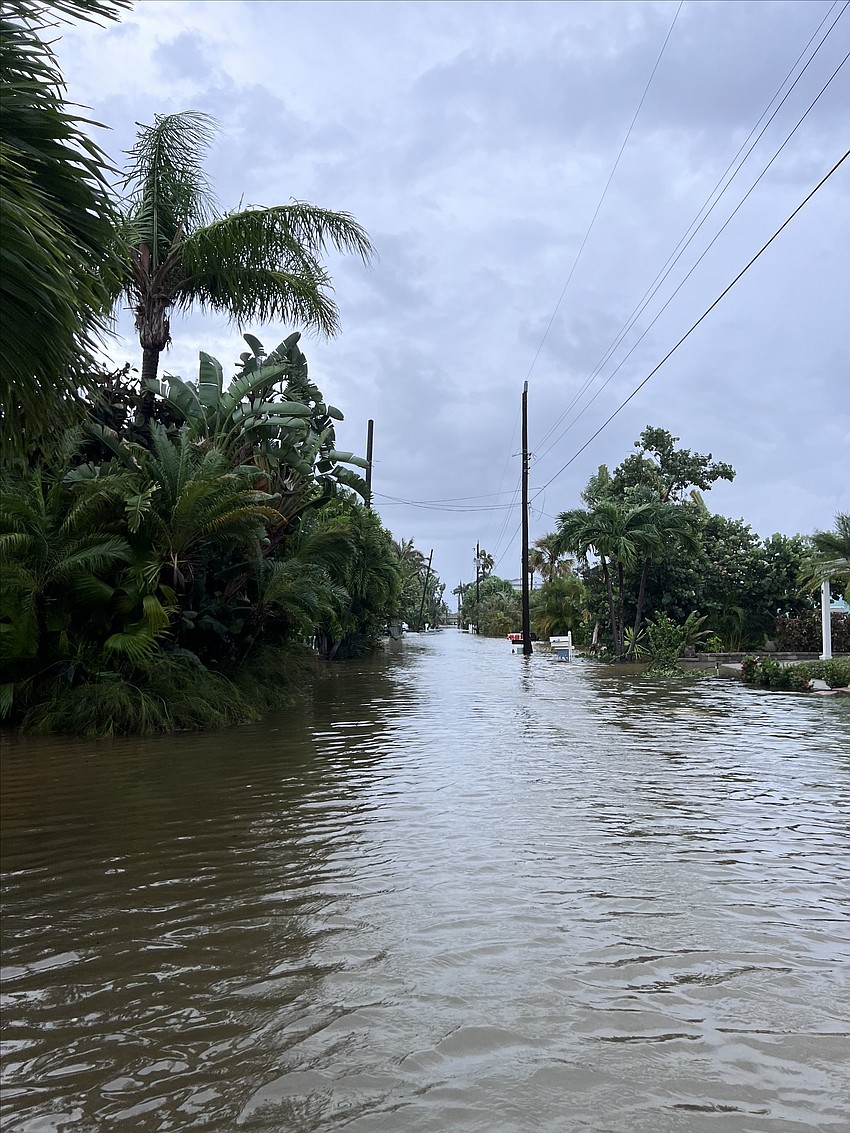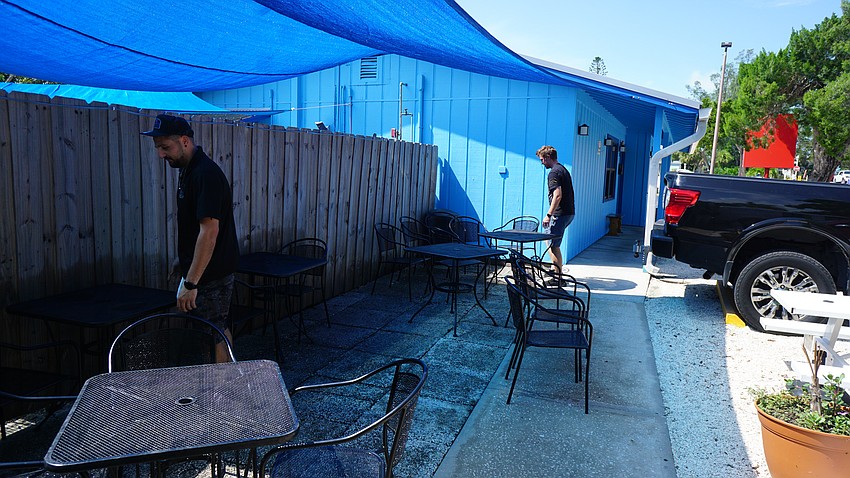- July 13, 2025
-
-
Loading

Loading

After the floodwaters receded, town staff and residents realized the full extent of Hurricane Idalia's damage.
Town staff found around 50 to 70 structures that may have had flooding-related damage, according to Director of Planning, Zoning and Building Allen Parsons,
The department completed a driving assessment of damage in the town on Aug. 30 after the storm passed.
Parsons said the main areas with high flooding were low-lying streets, such as St. Judes Drive North and South, Marbury Lane, Buttonwood Drive and several streets in the Village area.
Eyewitness accounts claimed that the Gulf Shore Mobile Home Park & the Twin Shores Mobile Home Park sustained water damage to some structures, while a larger number of reports claimed water damage to exterior air conditioning and heating units, according to Parsons.
No significant wind or structural damage was seen in the town’s initial assessment.
Low-lying areas in Longboat Key such as the Sleepy Lagoon and Buttonwood neighborhoods have a long history of flooding. Hurricane Idalia’s storm surge exacerbated the issue.
President of the Sleepy Lagoon Homeowners Association John Connolly identified two big areas of concern after hearing about the impacts of Hurricane Idalia.
First, the underground transformers couldn’t hold up to the high degree of flooding, Connolly said.
The transformers are a part of the town’s Utilities Undergrounding Project, in collaboration with Florida Power & Light.
On the town’s website, where frequently asked questions are listed about the project, the site claims that water levels would need to be “very high” in order for fuses to blow, and that those events are rare.
Due to flooding from Hurricane Idalia, many of the underground transformers in the Sleepy Lagoon neighborhood were submerged or close to it, which led FPL to need to replace them once the water receded, Connolly said.

He said he heard of at least 20 transformers that needed to be repaired after the flooding.
“I think there was a miscommunication somewhere about their storm resistance,” Connolly said.
This presents a safety issue, Connolly said. He sent an email to address the concerns with the town, and received a quick response. The concerns are now being forwarded to FPL.
Though he isn’t completely sure what the appropriate response would be, Connolly thinks maybe raising the concrete slab of the transformers would be one way to fix the issue.
Some residents that experienced the flooding also had to deal with electrical damage to 220-volt appliances, which include air conditioners, dryers and stoves.
Connolly said it’s not possible to directly connect the transformer issue with the electrical damage, since saltwater intrusion could have also been the culprit.
Another issue Connolly mentioned in his concerns to the town was about beach erosion.
“The beach erosion has been an issue for a while,” Connolly said. “It’s now been exacerbated.”
While beach renourishment may be the best short-term solution, Connolly hopes longer-term solutions can be addressed.
“Now, we’re going to start pushing a lot harder on that,” Connolly said.
Harry’s Continental Kitchens owner Lynn Christensen said the restaurant's office on St. Judes Drive was flooded with 13 inches of water after the storm surge of Hurricane Idalia.
Flooding on that street isn’t a rare occurrence, Christensen said, but this was the first time the deli had standing water. The deli is up the street just a few feet.
“I think that this time, the flooding was higher than it’s been in the last 20 years,” Christensen said.
Before the storm, Lynn’s son and Harry’s general manager Hal Christensen began preparations on Monday. He said he knew something was going to happen.
Having dealt with previous flooding in the office, the team knew what to do. They got to work lifting things two feet off the ground, placed sandbags outside and took their computers off-site.
When the family was able to get back to their business after Longboat Key was opened to residents and business owners, the water had already receded.
But Hal Christensen said the still-wet office smelled like a saltwater aquarium.

The team at Harry’s got to work quickly when they were allowed back onto the island. The first step was to clean and bleach the office space to make sure it was clean to be operated out of again. Then, it needed to be fully dried.
But by Thursday morning, the rest of the business was back open for business, and Hal Christensen was excited about the upcoming specials they were going to start serving.